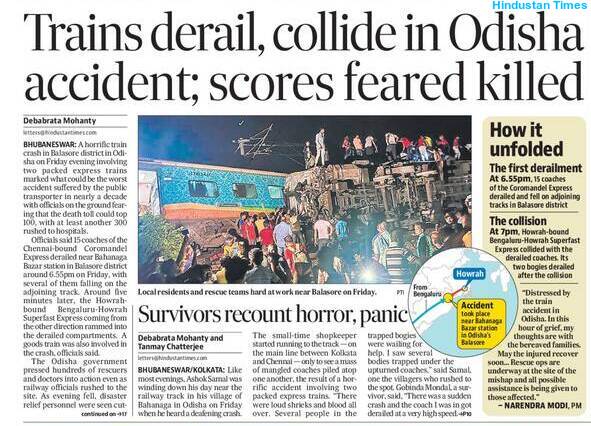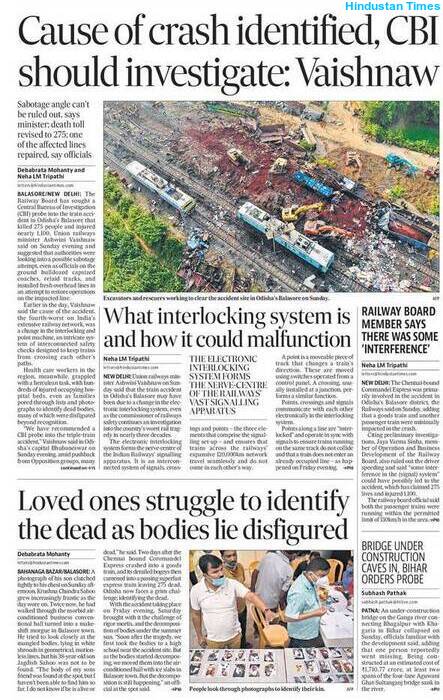Negligence Or Sabotage…
One of the biggest and tragic train accidents occurred in eastern Indian Province of Odisha on June 2, 2023, claiming more than 350 lives (unofficially 900 lives). No consolation is enough for the bereaved families, and it is important to ensure proper treatment, financial assistance and rehabilitation of the injured. Immediately after the accident (involving two passenger trains and a goods train), the Indian Ministry of Railways announced that a high-level investigation would be conducted to find the cause of the incident.


From the past experience, one can assume that there would be a number of easy targets who would be made the scapegoats. Surely, one or more railway personnel could be found who had mistaken the signal, or allowed the train to run on a wrong track, or committed some other horrendous blunders. The guilty should be punished, but that is not enough. It is also important to know why the world’s fourth largest railway network is in such a state of disrepair, and how an individual’s negligence resulted in such a horrific accident.

The Indian Railways introduced the Kavach System, an Automatic Train Protection (ATP) system indigenously developed by the Railways through Research Designs and Standards Organisation (RDSO), in 2022. Kavach alerts when a loco pilot jumps a signal (Signal Passed at Danger – SPAD), which is the leading cause of train collisions. The Railway Ministry has admitted that there is no such system on this route. Had the accident not happened, it would probably not have been known that the introduction of safety measures was just lip service given by Indian Railway Minister Ashwini Vaishnaw. So far, the Narendra Modi Government in New Delhi has not yet claimed responsibility for the accident. It seems that the Government would try hard to save its Railway Minister.

At a time when Prime Minister Modi has been launching Vande Bharat Express (a short-distance high-speed train service) one after another and planning to introduce bullet train service, this accident can be considered as the real image of the poor-quality railway services in India. It has also proven that the Government does not care about the safety of passengers. The fact is that the Government does not sanction a fraction of the amount required for improving the infrastructure of Indian Railways. Ahead of the launching of the Vande Bharat Express, the Opposition parties expressed doubt whether the tracks needed to run such a sophisticated train were in place. A number of railway bridges are in poor condition in India, while there is a need to change railway tracks at many places, and to introduce automotive level crossings.

Sadly, only 2% of railways in the entire South Asian nation are under the Government’s much-advertised Automatic Train Protection system. Of course, the main reason is lack of budgetary allocations for this purpose. It means the Indian Railways cannot afford luxury, not even to fulfil the dream of Prime Minister Modi. Then, how does the Government think about introducing high-speed bullet trains?

In fact, the Prime Minister wants to present India as a Developed Nation to the Global Community. He also wants to ensure that his country can compete with the Developed World. The question arises here: Can a high-level investigation by the Indian Railways point the finger at this lust for empty glitz?
Boundless Ocean of Politics on Facebook
Boundless Ocean of Politics on Twitter
Boundless Ocean of Politics on Linkedin
Contact: kousdas@gmail.com

